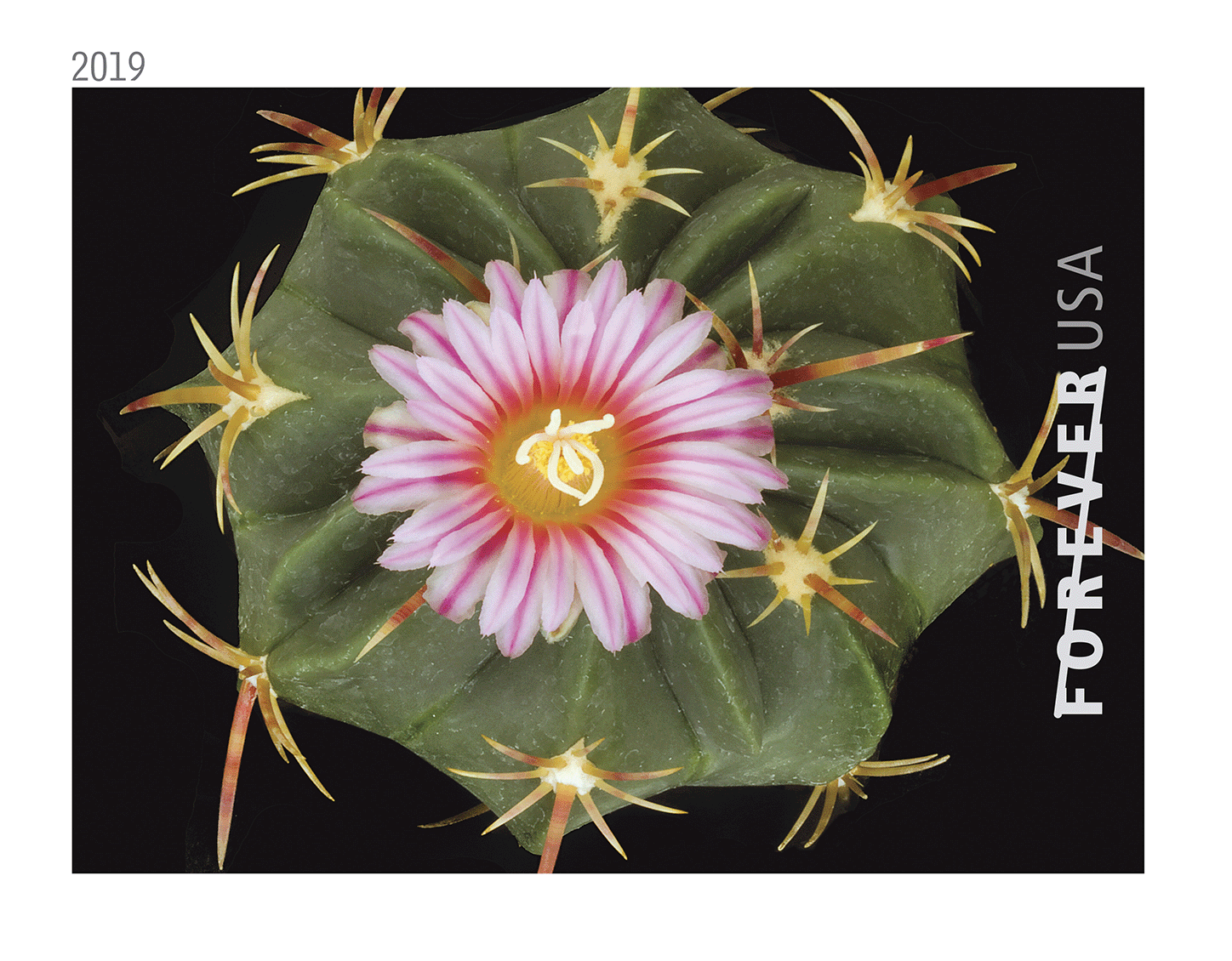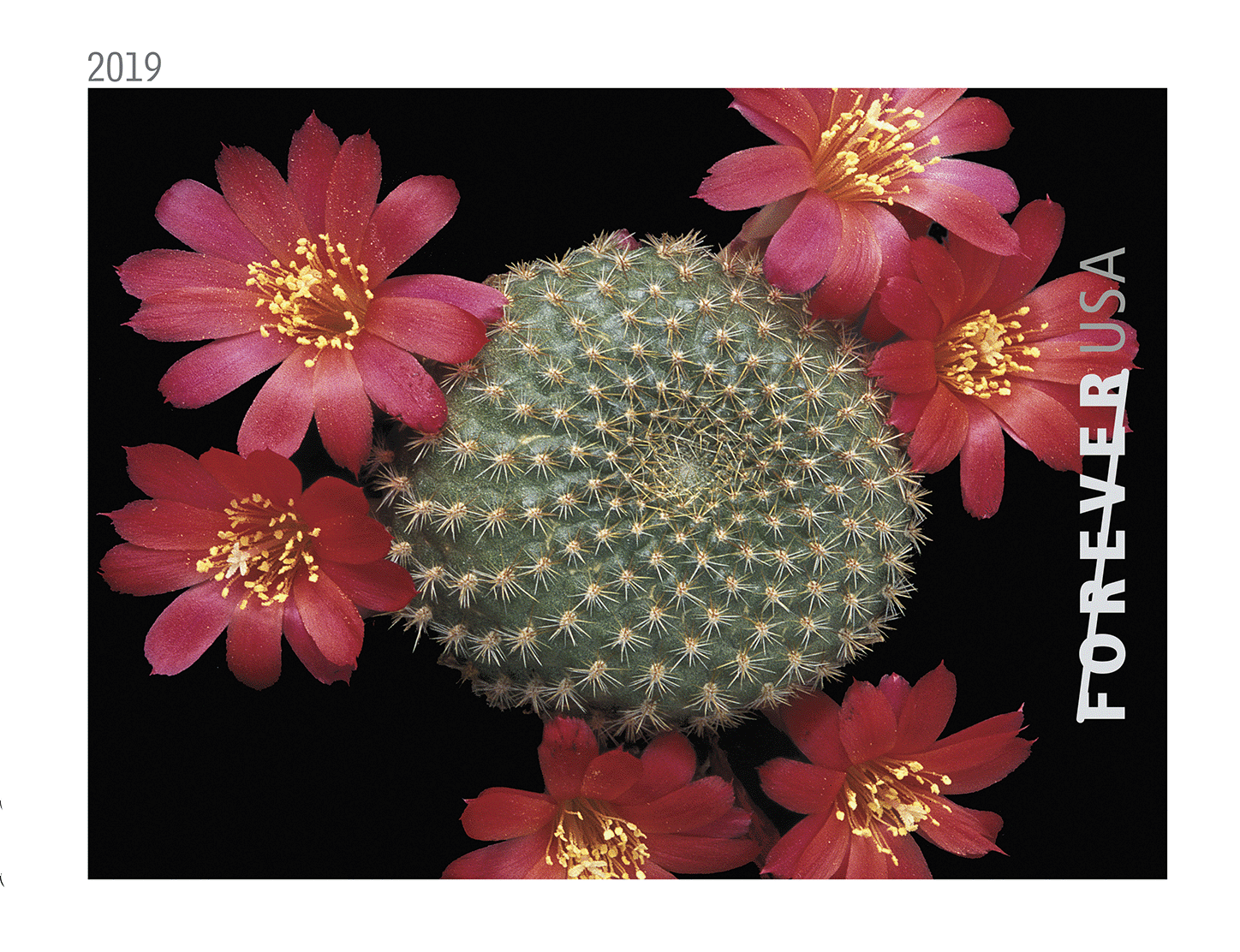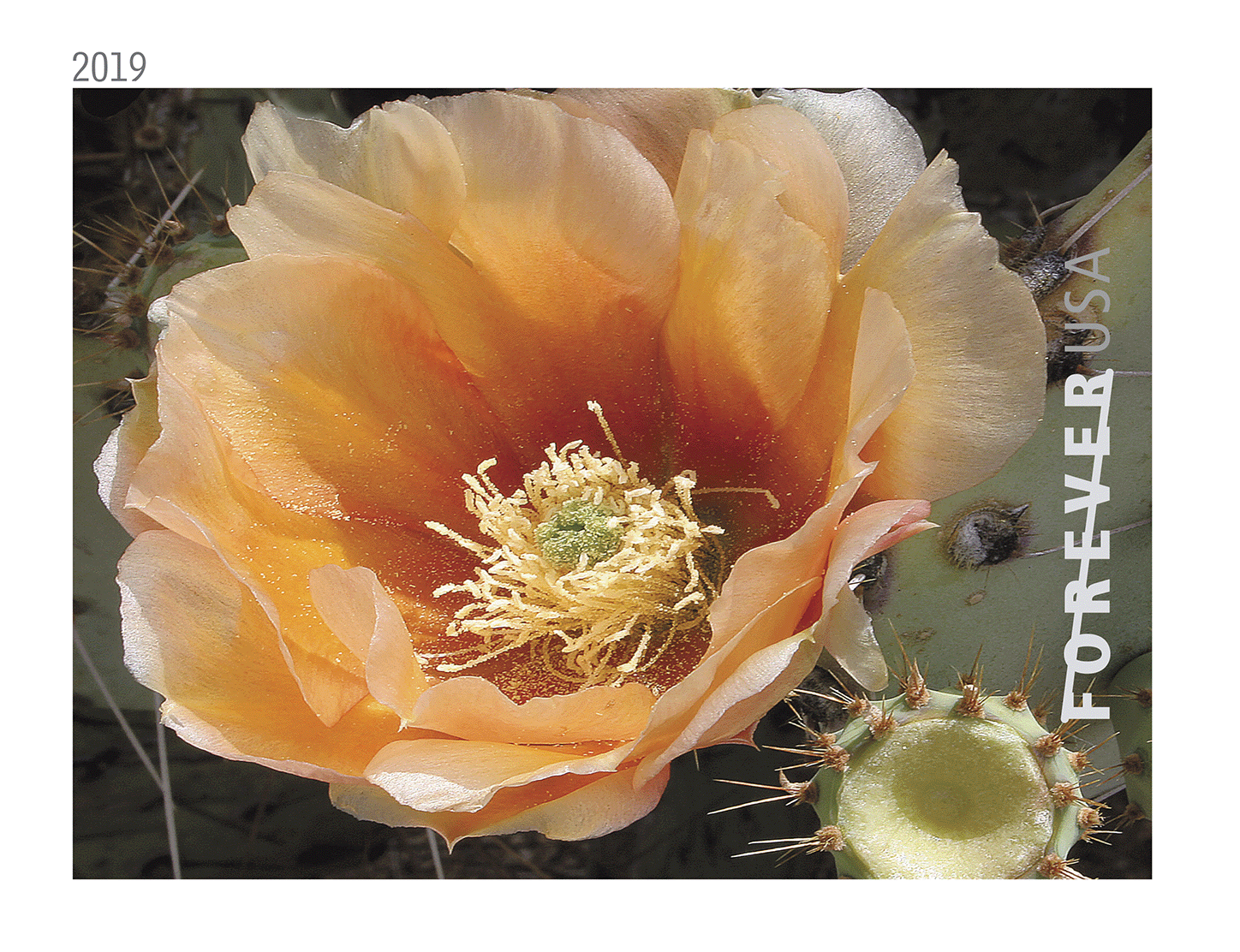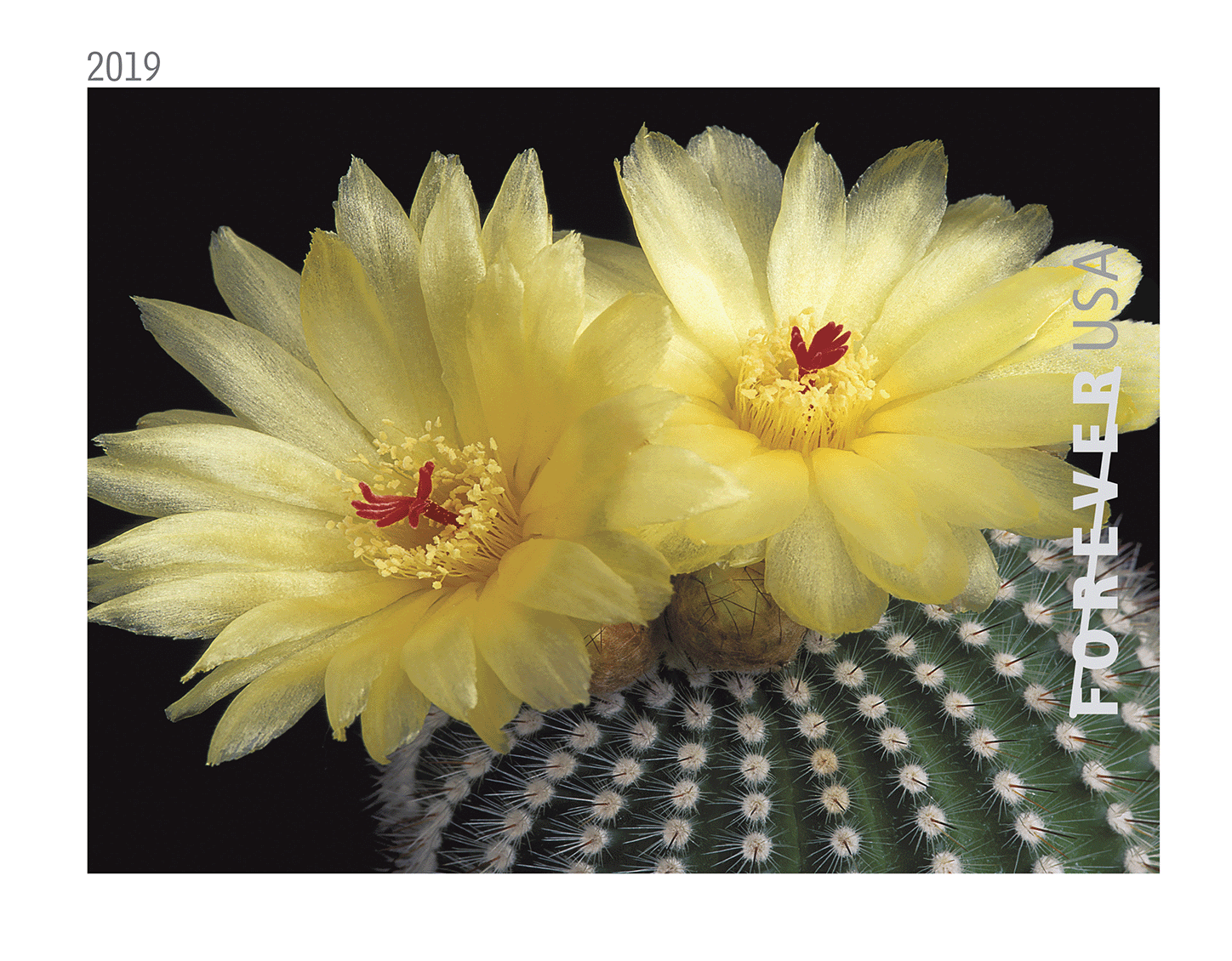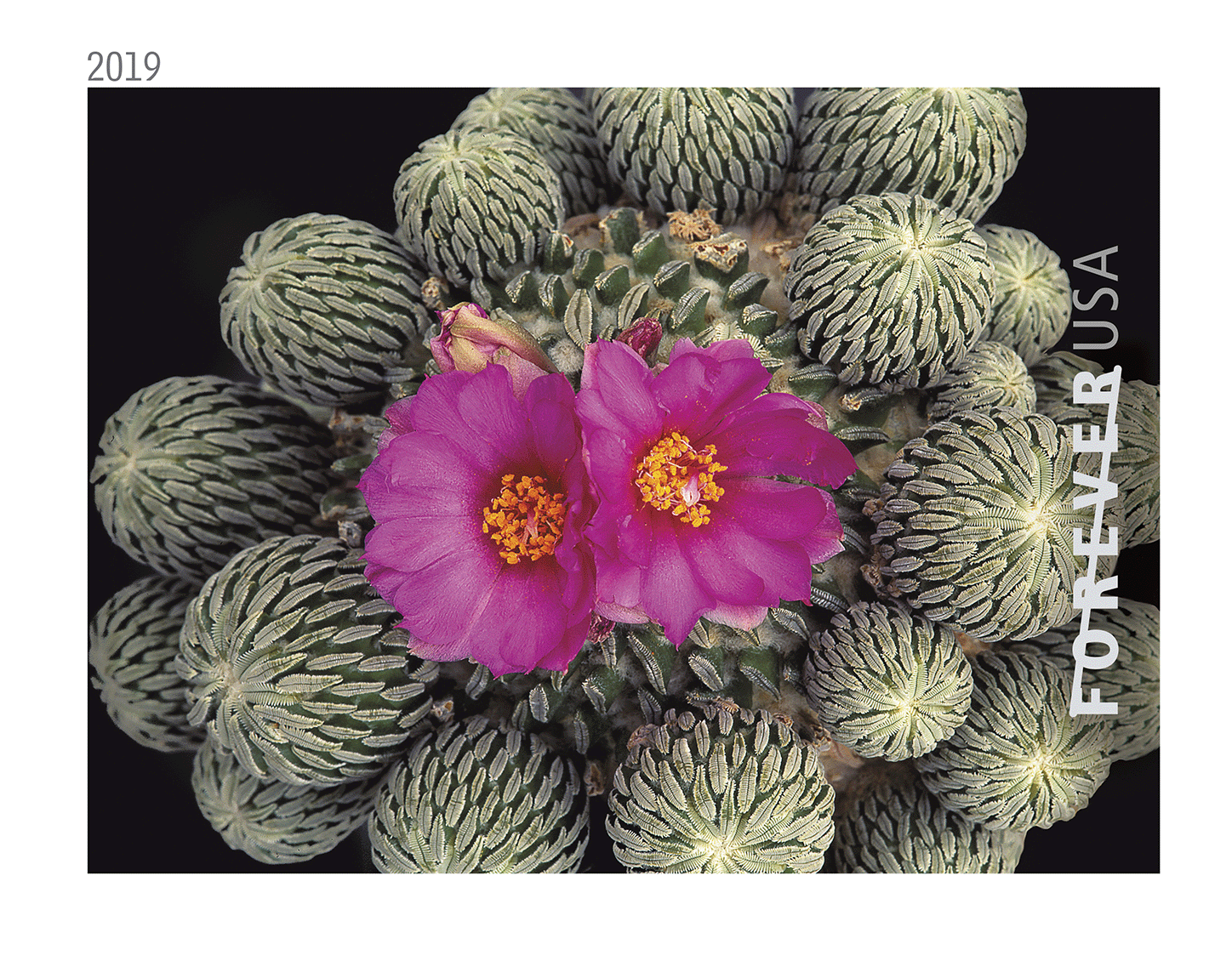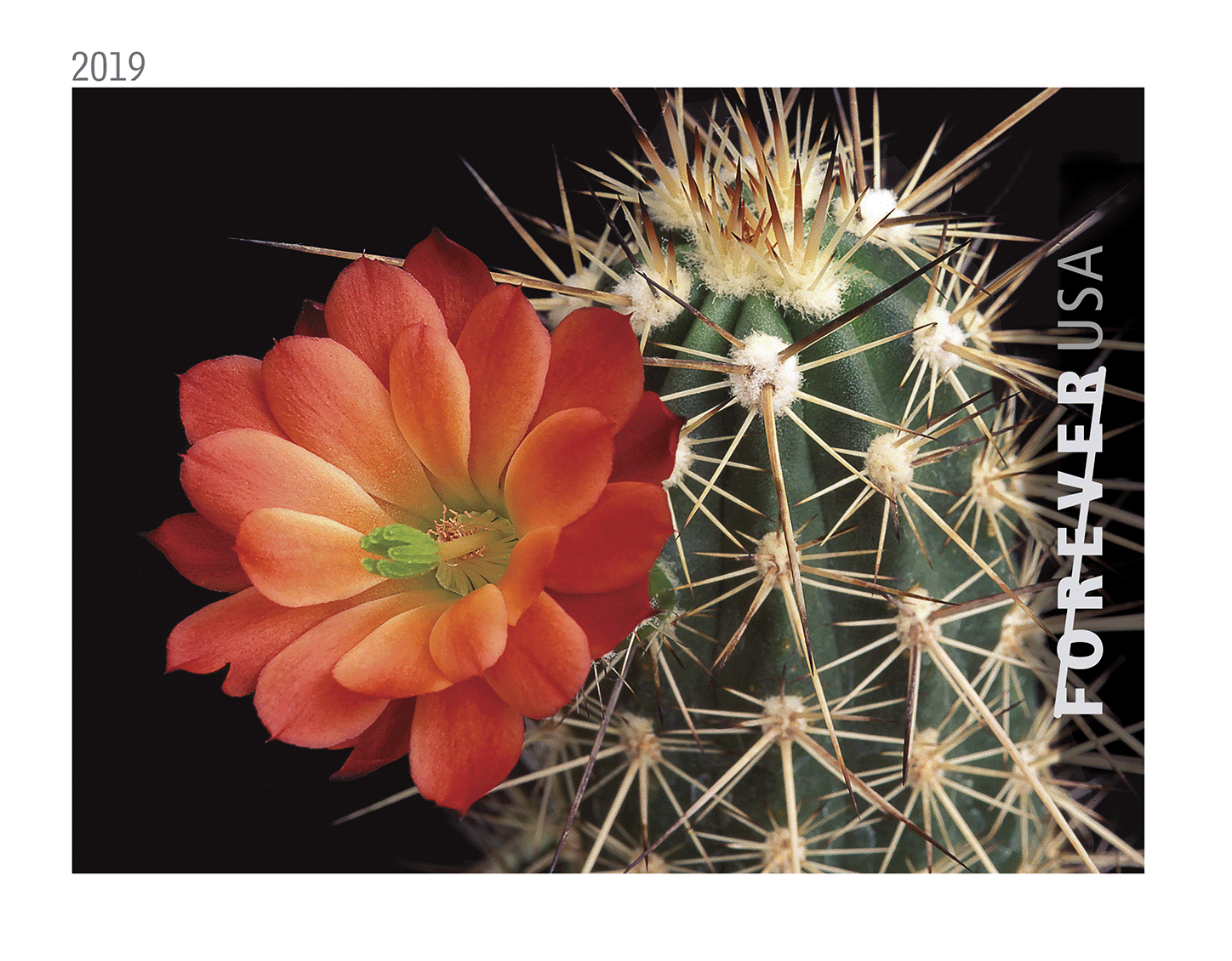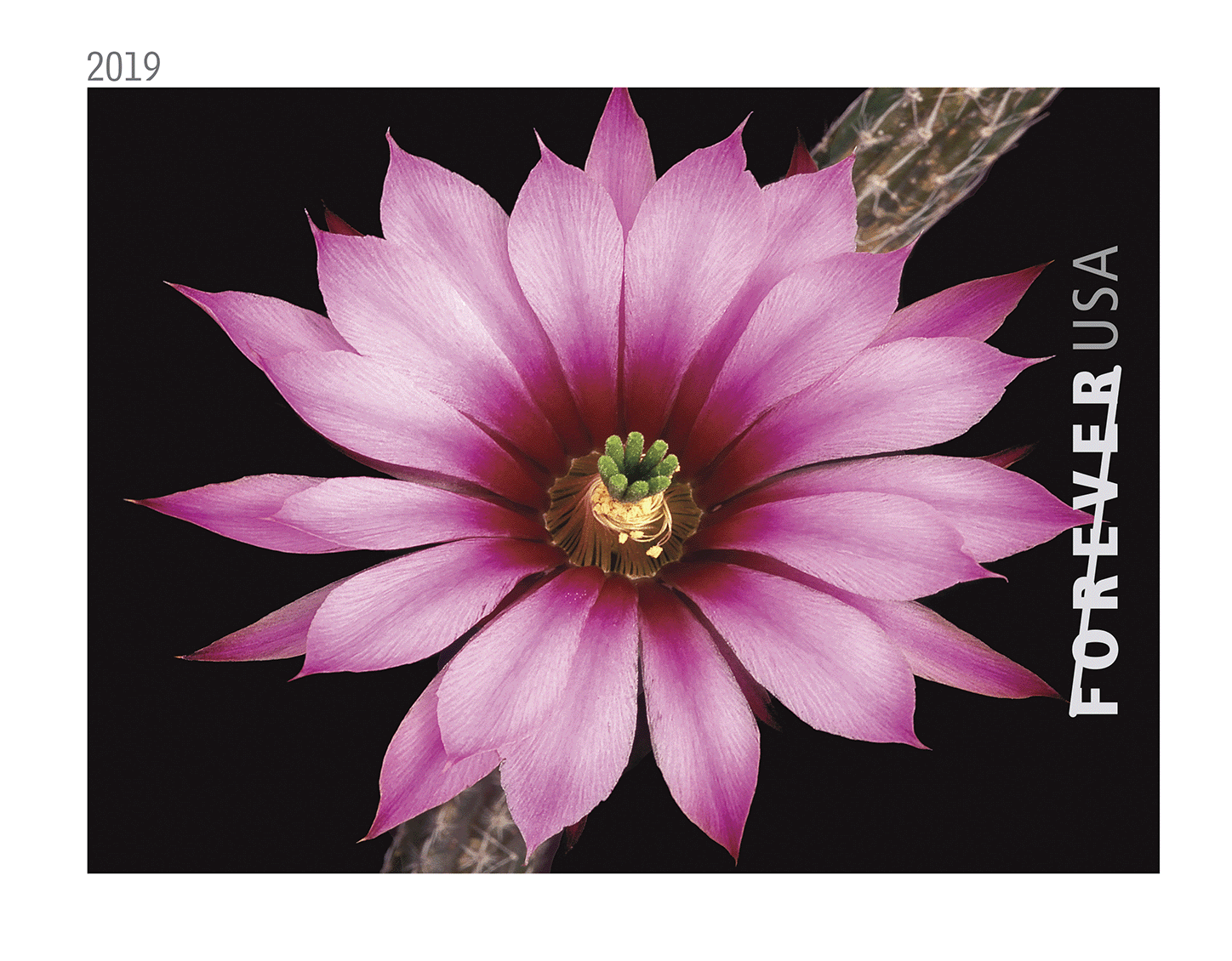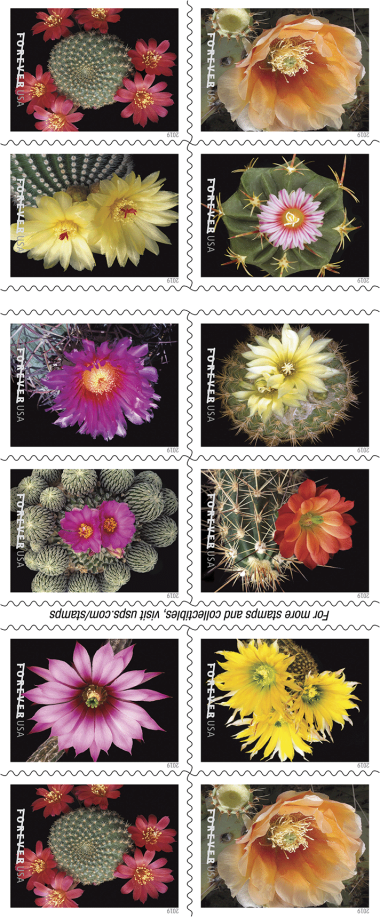
About This Stamp
Explore the unexpected beauty of cactus flowers with these 10 stamps from the U.S. Postal Service®.
Each stamp depicts a photograph of the flower of one of these ten cacti: Opuntia engelmannii, Rebutia minuscula, Echinocereus dasyacanthus, Echinocereus poselgeri, Echinocereus coccineus, Pelecyphora aselliformis, Parodia microsperma, Echinocactus horizonthalonius, Thelocactus heterochromus, and Parodia scopa. Within the booklet, each stamp design is featured twice. Cactus nomenclature is in flux, and with new DNA studies, botanists sometimes reclassify plants. As of the printing of these stamps, the names were accurate. Cacti also have common names, with some plants having several different names in popular use.
Cacti are flowering perennial succulents in the plant family Cactaceae. Though experts debate exact numbers, more than 1,500 species are known. Almost all cacti are native to the Americas, ranging from British Columbia and Alberta in Canada to the southern regions of Argentina and Chile. The southwestern U.S. and Mexico are home to the greatest variety and abundance of cacti.
Several botanic gardens in the U.S. showcase the wide variety and stunning beauty of these plants. When the cacti are in bloom, visitors are presented with a vivid — and surprising — floral display. Cactus flowers generally occur singly, although many separate blossoms might appear on a plant at the same time. Flowering occurs at different times of the year and even different times of the day or night depending on the species. Most cactus flowers are large and flamboyant, with colors of white, red, pink, orange, or yellow. Some flowers are also richly scented, and the nectar and colors attract pollinators such as bats, bees, and birds.
Cacti are among America’s most popular houseplants. Most cacti grow very slowly, and they are tough, adaptable, and low maintenance. They are also favorites for rockeries and desert and exotic gardens. When they bloom, their flowers put on a show that compares in beauty with any flower in the garden.
Art director Ethel Kessler designed the stamps with existing photographs taken by John P. Schaefer.
The Cactus Flowers stamps were issued as Forever® stamps in booklets of 20. These Forever stamps will always be equal in value to the current First-Class Mail® one-ounce price.
Stamp Art Director, Stamp Designer

Ethel Kessler
Ethel Kessler is an award-winning designer and art director who has worked with corporations, museums, public and private institutions, professional service organizations, and now, the United States Postal Service.
After earning a B.F.A. in visual communications from the Maryland Institute College of Art, Kessler worked as a graphic designer and project manager for the exhibits division of the United States Information Agency. Her work was distributed internationally on subjects such as Immigration, Entrepreneurship, Renovation of American Cities, and the Bicentennial of 1976. She was also responsible for exhibits in Morocco, Botswana, and El Salvador.
In 1981, she established Kessler Design, Inc., for which she is creative director and designer. Clients have included the Clinton Government reorganization, the Smithsonian Institution, National Geographic Television, the National Park Service, and the American Institute of Architects.
She has been an art director for the U.S. Postal Service’s stamp development program for more than 25 years. As an art director for USPS, Kessler has been responsible for creating more than 500 stamp designs, including the Breast Cancer Research stamp illustrated by Whitney Sherman. Issued in 1998, the stamp is still on sale and has raised more $98 million for breast cancer research. Other Kessler projects include the popular and highly regarded Nature of America 120 stamp series, a collaboration with nationally acclaimed nature illustrator John Dawson, the 12-year Lunar New Year series with Kam Mak, the American Filmmaking: Behind the Scenes 10 stamps issued in 2003, a 2016 pane of stamps celebrating the 100th anniversary of the National Park Service, and the 2023 stamp honoring Supreme Court Associate Justice Ruth Bader Ginsburg. And many, many others.
Existing Photos by

John P. Schaefer
John P. Schaefer, former president of the University of Arizona where he had an active, 21-year career in teaching, research, and administration, also enjoys a reputation as a skilled photographer. The founder of the University of Arizona Center for Creative Photography, the archive center of Ansel Adams’s photography, Dr. Schaefer is also the author of three best-selling books on photographic techniques and several books featuring his own photography on subjects such as Mission San Xavier del Bac, Native American tribes of the Southwest and Mexico, and cactus flowers in bloom.
His photographs have appeared in Arizona Highways and numerous other publications. In recent years, Dr. Schaefer has concentrated on photographing cacti and succulent plants and flowers.
Dr. Schaefer, who earned a Ph.D. in Chemistry from the University of Illinois, Urbana, is also an amateur astronomer, a classical music lover, and collector of southwestern art. A conservationist and avid birdwatcher, he helped organize the Tucson Audubon Society and the Nature Conservancy in Arizona.
The Cactus Flowers stamps (2019) feature 10 existing photographs of cacti taken by Schaefer.

